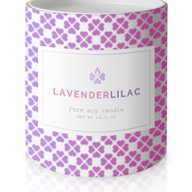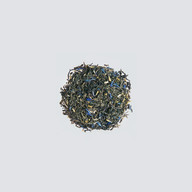Herbal Tea Garden – The Mint Family
- janaejean
- Sep 1, 2021
- 7 min read
Updated: Mar 29, 2022
5 Steepable Members of the Mint Family

Although kids are going back the—some physical and some virtual—school all across North America, it's easy to forget that it's still summer for another month! In this last month of summer, it's high time to harvest our many of favorite herbal teas from the garden and dry them to sip until next summer. In the last post, The Essence of Summer — A Guide to Summer Sipping, we were introduced to herbal flowers and plants from the Daisy, Grass, and Rose families. Today, we are going to look at one of the largest herbal families, the Lamiaceae (or mint) family. This family includes many of the most popular herbal infusions, especially those known as "balms" and "mints." It includes flowering ornamental plants as well as many common herbs used for culinary purposes and traditional medicine. Members of the mint family include bee balm, bells of Ireland, catnip, coleus, horehound, hyssop, lamb's ear, lavender, lemon balm, peppermint, spearmint, basil. holy basil, marjoram, oregano, patchouli, salvia, rosemary, sage, winter savory, summer savory, common self-heal, and thyme.
The Mint (Lamiaceae) Family

Members of the mint family can be identified bu their square stalks and simple leaves on opposing sides. Many members of this family are known for their rich scents, such as rosemary, basil, bee balm, lemon balm, and thyme. Their scents come from their highly concentrated aromatic volatile oils. If you look in your herb and spice rack, you are likely yo find many of these herbs are already in your kitchen. There are about 7,000 species that belong to the mint family. As a tisane or "herbal tea," mints are one of most popular choices. Peppermint is go-to choice for singers, for example, as its said to help relieve vocal inflammation. Two other popular herbal teas, lavender and lemon balm are both said to decrease anxiety and encourage relaxation.
Mint family plants are generally easy to grow, love the sun, and are tolerant of drought. Many of them have purple or blue flowers, but they can have many other colors of flowers as well. They feature foliage with fine hairs to catch the light and may have colorful markings. They often have tiny flowers and tiny seeds. These plants are known for attracting pollinators and will attract bees, hummingbirds, and butterflies to your garden. For example, lemon balm attract honey bees, so much so that its Latin name "Melissa" comes from the Greek word for honey bee. Scarlet bee is a popular attractor for hummingbirds, and catnip is not only appealing to cats but also to butterflies!
English Lavender

Lavender (lavendula) is a perennial herb. Its flowers and oil of lavender are used to flavor foods and drinks, add scent to cosmetics, soaps, potpourri, and other household products, as well as to make traditional medicines. While there are many types of lavender, English lavender is the most commonly used for culinary purposes.
Lavender tea is sometimes used to relieve anxiety and stress and as a over-the-counter sleeping aid. Some people believe that it lessens depression and helps with pain, but currently, there is no scientific evidence that supports this, and it’s not approved to treat any specific condition in the United States. Lavender oil does seem to have a sedating effect and make help relax muscles. It also seems to have an anti-bacterial and anti-fungal effect.
The many uses of Lavender.
Lavender Flower Tea
1 tablespoon dried lavender buds
8 oz. boiling water
Honey, to taste
Steep dried lavender in boiling water for 10 to 15 minutes. Stir in honey, if desired. Lavender combines well with other members of the mint family as well as traditional black, green, and white teas.
For more on English lavender, see
Bee Balm

Bee Balm (Monarda) is flowering perennial herb. It is sometimes called "wild bergamot" because it's scent is similar to bergamot, a member of the Citrus family that lends its distinctive aroma to Earl Grey tea. Its flowers come in a range of colors—bright and beautiful blooms in shades of deep scarlet, pinks, purples or white.
Bee balm is a great choice for a pollinator garden as it attract hummingbirds, butterflies, as well as bees. Additionally, the dried seedbeds attract bird in the fall and into the winter. With all of the seeds they produce, they also spread very easily and can begin to take over the garden if you don't keep it in check. In our garden, it started out in one corner and now we have it throughout the yard. We've also noticed that tends to get powdery mildew on its leaves if it planted very compactly. We've been able to keep the mildew under control by spirtzing the plants with organic and harvest-safe neem oil spray.

Unlike other members of the mint family, bee balm is not often thought of as an edible herb. The Oneida and Oswego nations use the leaves of bee balm and its flowers to make a variety of traditional medicines to treat many ailments including fevers, headaches, and stomachaches. It is also known to be an antiseptic. Also, the flowers and leaves can be used to make herbal tea, to add beauty and aroma to salads, and as a garnish. As an herbal tea, bee balm tea has a flavor reminiscent of Earl Grey. For this reason, you may also wish to try combining dried bee balm with black tea.
Bee Balm Flower Tea
2 tablespoons of fresh bee balm flower petals
8 oz. water
Boil one cup of water and allow it to cool for two minutes. Then pour it over the bee balm flower petals and allow to steep for 15 minutes.
For more on Bee Balm, see
Lemon Balm

Lemon Balm (Melissa officinalis) is a perennial herb known for its lemony scent. It has tiny white flowers and grows quickly and is extremely self-spreading if not controlled. The plants grow to a fairly large size, about 40 inches tall (about 100 cm). Like its cousin, bee balm, lemon balm attracts bees to the garden. (In fact, the word "Melissa" in its Latin name means "honeybee.") Its native to south-central Europe, the Mediterranean, Iran, and Central Asia but grows elsewhere and fairs well here in the Midwest.

As a traditional medicine, lemon balm has many uses and is used to treat many ailments since the Middle Ages, including anxiety, stress, insomnia, indigestion, cold sores, nausea, PMS, headaches, and even improve cognitive function! As a edible herb, it is used in recipes to add a lemony flavor. Ice lemon balm tea combines well with black iced tea to make an herbal take on the Arnold Palmer. Its freshly picked leaves make a lovely tea, and you can dry lemon balm and use it to make tea all year long.
Fresh Lemon Balm Tea
A few handfuls of freshly picked lemon balm leaves
8 oz. water
Boil one cup of water and allow it to cool for two minutes. Fill a teapot with fresh lemon balm leaves. Then pour the water over the leaves and allow to steep for 15 to 20 minutes.
For more on Lemon Balm, see
Peppermint

Peppermint (Mentha piperita) is one of the most well-known types of mint. It is actually a hybrid of another popular mint, spearmint (see below) and another called watermint. Its indigenous to Europe and the Middle East but now grows throughout the world. It has purple flowers, and its bright, fragrant leaves are used for a range of culinary uses as well as in traditional medicines. Since it's a hybrid, it does not normally produce seeds but spreads by sending up runners.
While peppermint is used for its flavor, in ice cream or chewing gum for example, it is also one of the most popular herbal teas. Many singers and choral conductors swear by it for a treatment for mild laryngitis, and it has been found to help clear blocked sinuses. Other uses of peppermint tea include to treat insomnia, relieve headaches, aid in weight loss, treat PMS, increase focus, and to lessen the effects of seasonal allergies. However, more research is needed to be determine how effective peppermint is as a medicine. Whether or not peppermint tea is an effective supplement, it does help freshen breath and is a way to add more water into the diet without added sugars or caffeine.

Fresh Peppermint Leaf Tea
8 fresh peppermint leaves
8 oz. boiling water
Lemon or lime slices, if desired
Bring water to a boil and then remove form heat. Add leaves to the water and steep for five minutes. Serve with lemon and lime slices, if desired.
For more on Peppermint, see
Spearmint

Along with peppermint, spearmint (Mentha spicata) is another one of the most popular mints for herbal tea. Spearmint is a perennial herb native to Europe and southern temperate Asia but now found around the globe. It is used as a flavoring and a herbal tea, and its oil is used for its flavor and its scent. It has white or pink flowers and grows up to 40 inches (100 cm) tall.
Spearmint has been used as a flavoring, a cosmetic, and a medicine since ancient times. According to Roman myth, Proserpina, Pluto’s wife, transformed a rival into the mint plant. Also, spearmint was added to milk to lengthen its shelf-life in the days before refrigeration. It is also mentioned in the Bible and by Pliny the Elder.

Spearmint has a milder flavor than its hybrid cousin, peppermint, and mint jelly (which is often served with lamb) is made of spearmint. It is also used in salads, beverages, and to flavor vegetables. Moroccan Mint Tea is made by combining spearmint leaves with green tea and sugar.
Dried Spearmint Leaf Tea
1 ½ teaspoons dried spearmint leaves
8 oz. boiling water
Honey, if desired
Pour freshly boiled water over dried spearmint leaves and steep for five minutes. Pour into cup through a tea strainer and serve with honey, if desired.
For more on Spearmint, see

Janae J. Almen is a professional music instructor, composer, sound artist, and freelance writer and editor. She has studied Japanese Tea Ceremony at the Japanese Cultural Center in Chicago, IL and enjoys adding artistry and creativity to the tea table and the kitchen.













Combining a nutritious diet with consistent exercise was the fastest way for me to grow muscle and lose weight. I was already working out, but the effects took time to manifest. But I noticed results right away after changing my diet and starting to purchase items from https://kodiakcakes.com/collections/baking-mixes! I presently maintain my ideal shape through workout and a healthy diet!